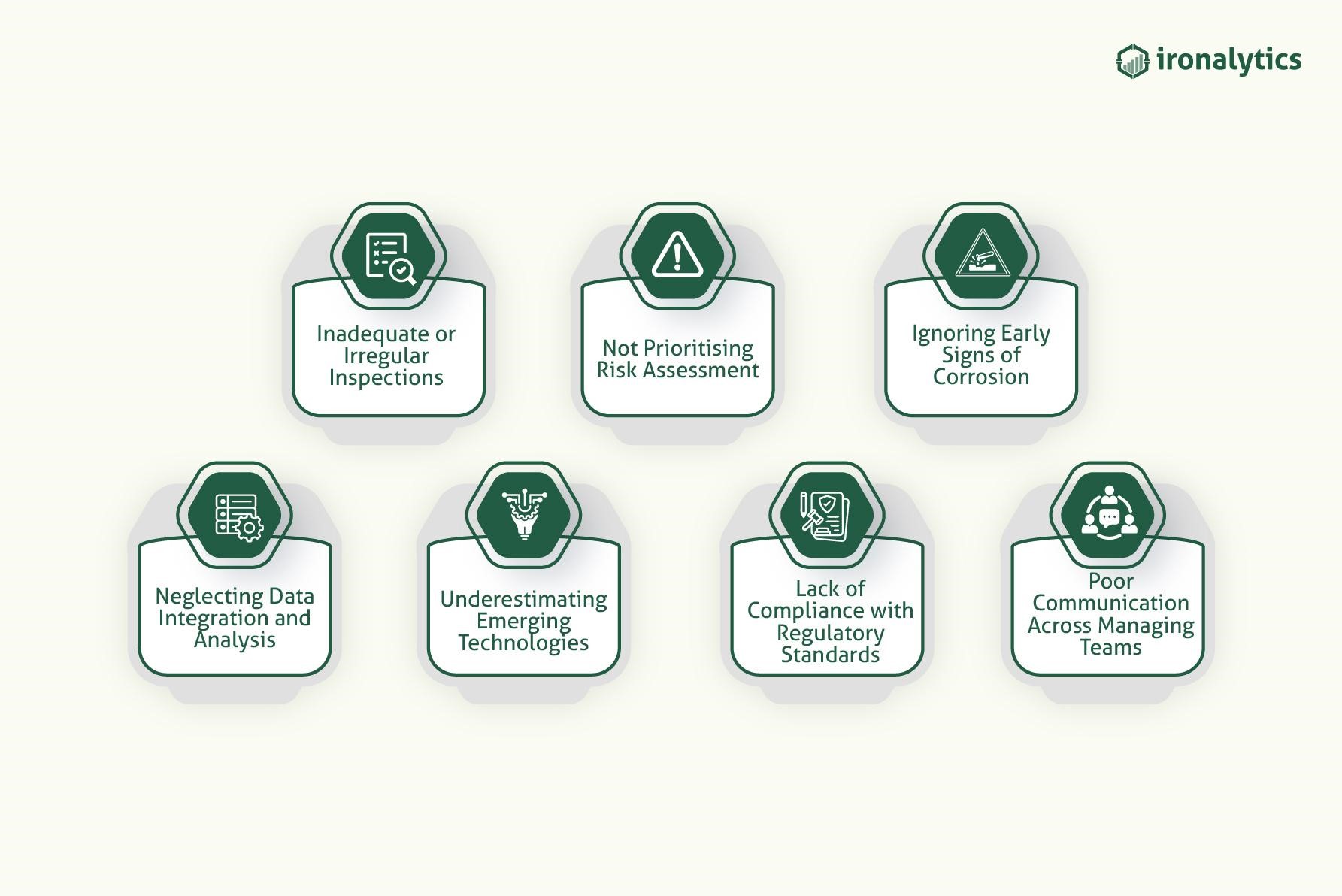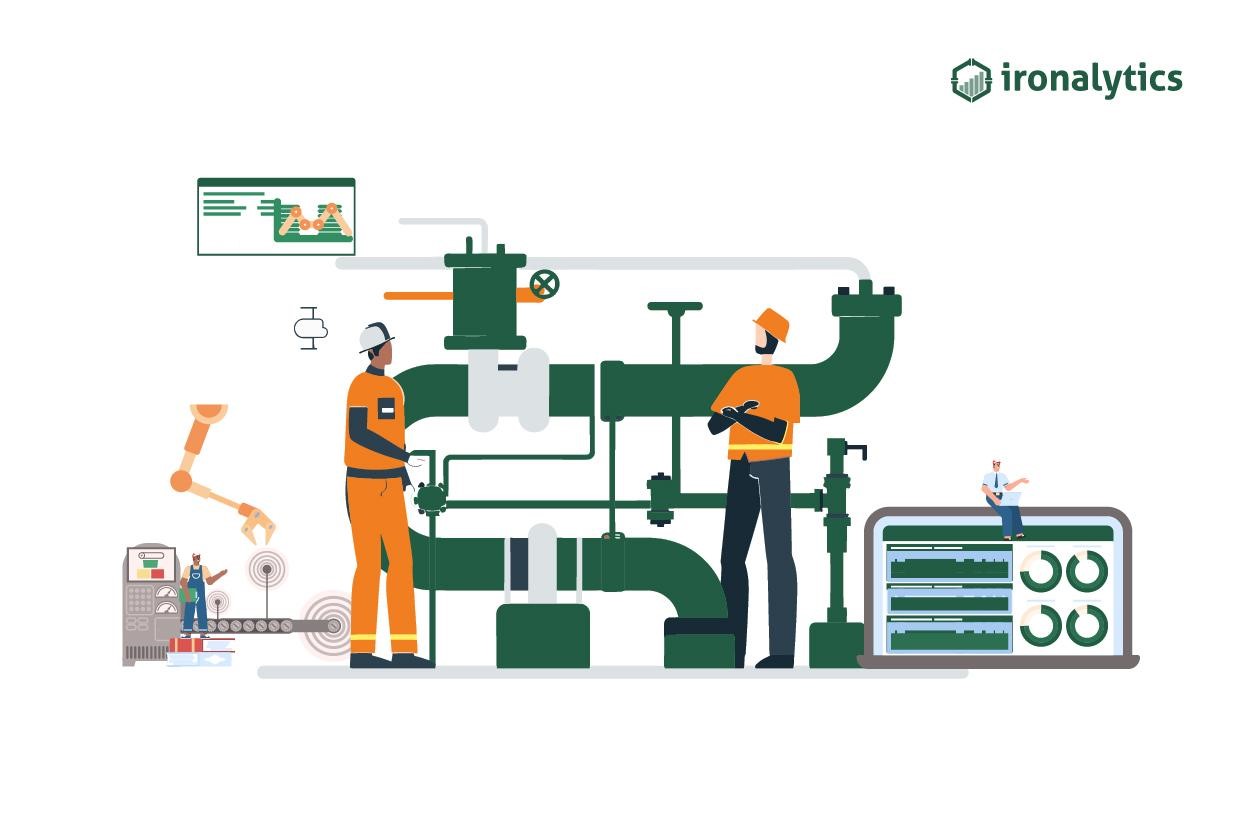7 Common Mistakes to Avoid for Successful Pipeline Integrity Management


Poor maintenance in pipeline integrity management can cause severe infrastructural and environmental damages with hefty fines. These issues not only put safety at risk but also hit businesses hard financially. That's why pipeline integrity mistakes should be avoided. Pipeline integrity management keeps operations running smoothly and prevents dangerous leaks or failures. By staying on top of maintenance and inspections, businesses can protect both their workers and the environment, ensuring everything runs safely and efficiently.

Do you know of regions like North America and Europe that have been in existence for more than 50 years? This increases the likelihood of structural failure, making regular integrity checks essential. These are the results of poor pipeline integrity management leading to pipeline integrity mistakes. One needs to constantly monitor and identify threats that can cause serious issues in the present or future.
Common Pipeline Integrity Mistakes
Among many mistakes and negligence during pipeline integrity management, some common pipeline integrity mistakes should be avoided. Here are some mistakes listed below: 1. Inadequate or Irregular Inspections 2. Not Prioritising Risk Assessment 3. Ignoring Early Signs of Corrosion 4. Neglecting Data Integration and Analysis 5. Underestimating Emerging Technologies 6. Lack of Compliance with Regulatory Standards 7. Poor Communication Across Managing Teams

Let’s discuss these in detail.
Inadequate or Irregular Inspections
Conducting inadequate or irregular inspections is not acceptable regarding pipeline integrity management. Pipelines are subject to various external & environmental factors that can damage or weaken their structural integrity over time. Even minor problems, like corrosion and leaks, can be missed due to improper pipeline integrity management, leading to greater risks. Consequences: 1. Missed Early Detection: Detecting issues at an early stage can save your pipeline from physical damage and prevent environmental risks. For this, you need to perform a regular inspection consistently and stay alert. 2. Increased Repair Costs: If you miss even a minor problem at its initial stage, it can lead to more complex issues, leading to high repair costs. Frequent inspections allow you to identify the risk at its earliest stage. 3. Risk to Safety and Environment: Pipelines carrying hazardous materials can cause a significant safety and environmental risk. Not maintaining a strict inspection schedule increases the chances of leaks or ruptures, which can lead to environmental contamination.
Failing to Prioritise Risk Assessment
Post-inspection, you need to understand the different issues in pipeline integrity and what sort of risk assessment should be performed for specific issues to sort them out. However, it depends on the nature of risk arising in different pipeline segments. Some pipeline areas might traverse high-population zones, environmentally sensitive regions, or areas with high corrosive potential. Others might be subjected to frequent temperature fluctuations or intense operational pressure. Poor risk assessment means overlooking these differences, which can lead to inadequate protection for higher-risk sections and a waste of resources on lower-risk areas. Here are some common errors that pipeline operators which should be avoided for successful risk assessment: ● Focusing on historical data alone: Relying too heavily on past incidents without considering emerging risks or changes in pipeline conditions can lead to an inaccurate assessment. ● Failure to update assessments regularly: Risk factors evolve, and failure to reassess the pipeline's risk profile over time can leave vulnerabilities unchecked. ● Inadequate consideration of consequences: Overlooking the potential impact on the environment, population, and company operations can skew the risk prioritisation. ● Using a one-size-fits-all approach: Treating all pipeline segments equally rather than addressing their unique risks can lead to improper prioritisation.
Ignoring Early Signs of Corrosion
Corrosion is a gradual yet highly destructive process that weakens pipelines' structural integrity. Ignoring the early signs of corrosion can lead to severe damage over time, resulting in leaks, ruptures, and even catastrophic failures. Corrosion weakens the pipeline, making it more prone to cracks, leaks, or ruptures. Corroded pipelines can go through pressure losses, which may cause operational inefficiencies and safety hazards.
Neglecting Data Integration and Analysis
Integrating data from multiple sources, such as inspections, sensors, and historical records, is important in pipeline management. It allows you to make informed decisions and helps you carry out efficient operations. But suppose you fail in data integration and analysis. In that case, you will also miss out on valuable information about your pipeline data that could help save your pipelines from failures and costly downtime. Importance of Integrating Data from Multiple Sources ● A Comprehensive view of pipeline health: Monitoring complex pipeline infrastructure demands a comprehensive, holistic view by integrating data from various sources. ● Enhanced predictive maintenance: Data integration enables advanced analytics and machine learning to predict when and where issues might occur, allowing for targeted and timely maintenance actions. ● Streamlined operations: Integrated data allows for the automation of various pipeline monitoring and management tasks, reducing manual effort and improving operational efficiency.
Underestimating Emerging Technologies
As technology evolves rapidly, people's expectations and requirements naturally follow suit. This constant advancement has had a profound impact on the safety and security standards within the oil and gas pipeline industry. Ignoring the importance of adopting these modern technologies doesn't just hinder operational efficiency—it can also lead to significant safety risks and costly issues. Let’s understand the Impact of ignoring adopting New Technologies on Pipeline Integrity in detail: ● Increased downtime and inefficiencies: Older technologies are outdated. They heavily depend on manual operations, which are time consuming and ineffective in today’s modern times. So, using them now will only lead to inefficiency. ● Higher safety risks: Emerging technologies improve the accuracy and speed of threat detection, making it easier to prevent catastrophic events like explosions or environmental spills. Failure to use these technologies increases operational risk. ● Regulatory non-compliance: Oil and gas pipelines are complex and highly critical industries that constantly keep their safety regulations changing and bring advanced ones. To cope with these advanced regulations your pipelines need better technologies.
Lack of Compliance with Regulatory Standards
Failing to meet regulatory standards in the oil and gas industry brings serious risks. Misunderstanding or ignoring regulations can hit hard with heavy fines, halt operations, and even lead to legal trouble. It also damages the company's reputation and affects the future business opportunities. The industry leaves little room for error, with strict regulations addressing environmental concerns, health and safety risks, and global standards. Top Compliance Pitfalls in the Oil & Gas Industry 1. Missing Environmental Standards Many companies fail to meet environmental regulations like emissions control and waste disposal practices. These lapses can lead to hefty fines and long-term damage to both the environment and the company's reputation. Some companies overlook health and safety protocols, such as improper handling of hazardous materials. This negligence puts workers at risk and leads to legal trouble, not to mention the potential for operational shutdowns. 2. Overlooking Local Workforce Requirements Delaying or submitting inaccurate reports creates compliance issues that can quickly escalate. Companies that don’t keep up with documentation risk fines and even operation restrictions. In some regions, regulations require companies to hire a certain percentage of local workers. Failing to meet these local content requirements damages relationships with regulators and limits opportunities for future growth. 3. Poor Permit and License Management Some companies operate with expired or incomplete permits and licenses, setting themselves up for shutdowns. Mismanaging these essential documents can lead to costly operational delays.
Poor Communication Across Managing Teams
Poor communication between field teams, operations, and management can seriously hinder efficiency in the oil and gas industry. When teams don’t stay connected, misunderstandings occur, decisions are delayed, and workflows slow down. Field teams deal with real-time challenges that need quick action, so when communication breaks down with operations or management, the risks grow. This can lead to safety issues, operational downtime, or even pipeline integrity failure. Importance of Clear Communication in the Oil & Gas Industry ● Timely Problem Reporting Field teams need to quickly report issues like leaks, corrosion, or equipment malfunctions to operations and management. Fast communication ensures immediate action, preventing small problems from turning into major setbacks. ● Coordinated Maintenance Clear communication keeps teams aligned on maintenance schedules, reducing the chance of delays or overlapping tasks. This coordination ensures smooth operations and avoids unnecessary downtime. ● Emergency Response Consistent communication enables teams to act swiftly and effectively in emergencies. Quick coordination prevents accidents and minimises damage, keeping everyone safe and systems running smoothly. ● Risk Prevention and Efficiency Strong communication helps identify risks early and boosts operational efficiency. When teams are on the same page, they can prevent problems before they escalate, keeping the workflow seamless and safe. It is hard to avoid these mistakes and run a successful pipeline company in the oil and gas industry if you plan to do things manually. However, it is not possible to do safety measures manually, but still using an extra hand as help will only boost your productivity and efficiency of pipeline integrity. One such reliable pipeline integrity management solution is Ironalytics.
Pipeline Integrity Management Solution: Ironlytics
Ironalytics is a powerful platform built to simplify pipeline integrity management for industries dealing with complex data and operational challenges. Its goal is to boost safety and efficiency by automating data integration and threat analysis across areas like cracks, dents, corrosion, cathodic protection, and right-of-use (ROU) issues.

Key Features of Ironalytics: ● Pipeline Integrity Digitalisation: Ironalytics digitises data from multiple sources, offering clear insights into pipeline health. Custom dashboards, geotagging, and automated integrity KPIs make reporting and monitoring easier, accessible on any device. ● ROU/Integrity Management: It tracks ROU events like encroachments or third-party activities automatically, ensuring legal compliance and minimizing downtime. Integrated with drone surveillance, it provides real-time tracking and alerts for efficient management. ● Defect Assessments and ILI Analysis: Ironalytics automates in-line inspection (ILI) assessments, providing detailed visualisations based on industry standards. It also predicts corrosion, metal loss, and remaining pipeline life for proactive maintenance. ● Geospatial Analysis: Using Google Maps, Ironalytics delivers geospatial visualizations of pipelines, showing asset locations, risk zones, and historic anomalies for better decision-making. ● Risk Management: The platform automates threat detection and creates risk profiles, adhering to ASME and API standards. It helps operators identify high-risk areas and take action to prevent issues. ● SCADA Integration: Ironalytics connects with SCADA systems for real-time analysis of product quality and internal corrosion modeling, predicting maintenance needs and extending pipeline life.
Conclusion
Mistakes in critical industry like Oil and Gas should be strictly avoid. Even a small change in data reading can cause huge accidents and damages. Companies must set a secure and effective pipeline integrity management to avoid any kind of errors or mistakes for smooth operations. Investing in advanced pipeline management technologies is not just about preventing failures—it's about optimising long-term performance and protecting both the environment and business assets. Book a demo with Ironalytics today to discover how our platform can help you.












